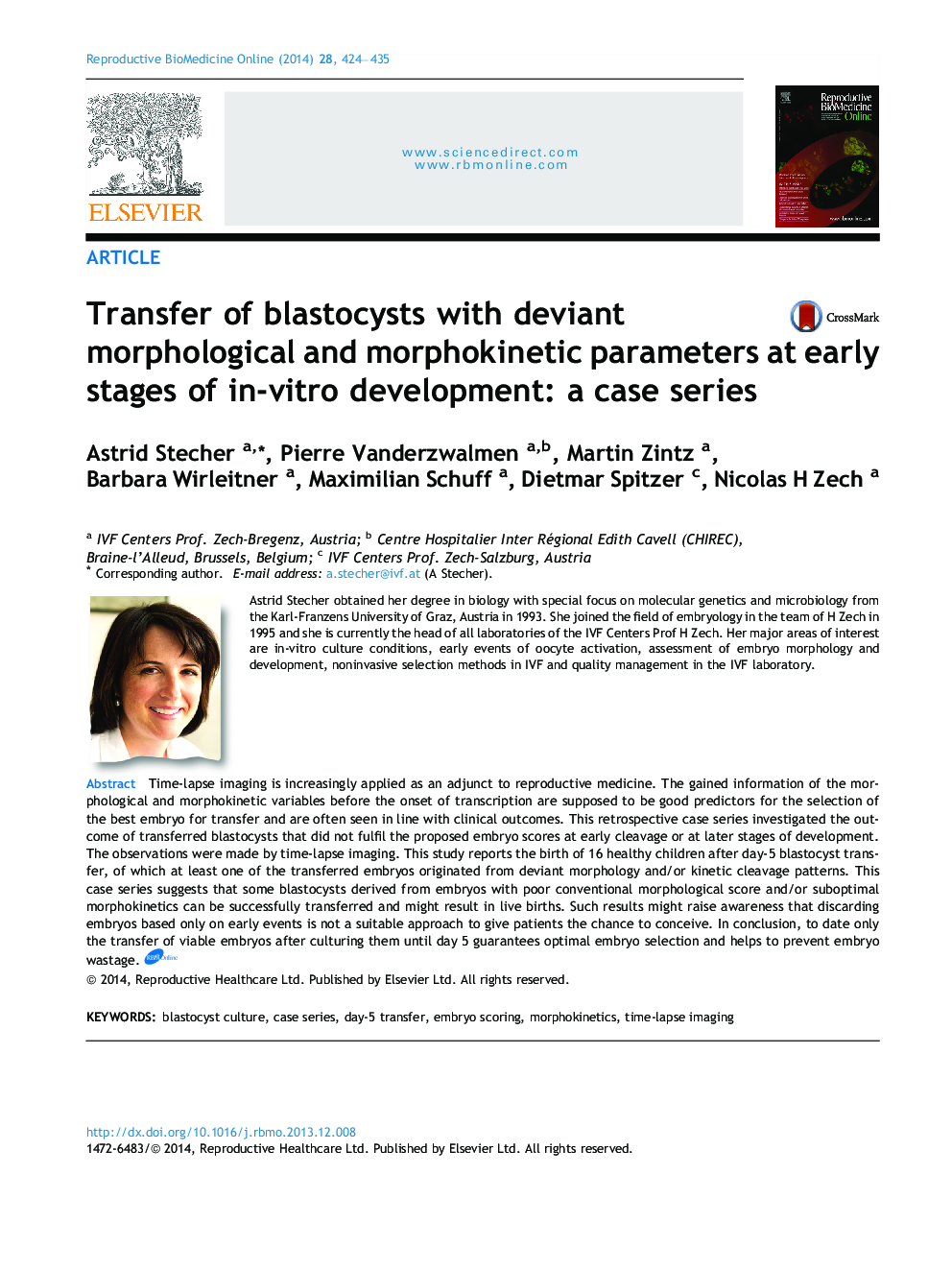| Article ID | Journal | Published Year | Pages | File Type |
|---|---|---|---|---|
| 3970195 | Reproductive BioMedicine Online | 2014 | 12 Pages |
Time-lapse imaging is increasingly applied as an adjunct to reproductive medicine. The gained information of the morphological and morphokinetic variables before the onset of transcription are supposed to be good predictors for the selection of the best embryo for transfer and are often seen in line with clinical outcomes. This retrospective case series investigated the outcome of transferred blastocysts that did not fulfil the proposed embryo scores at early cleavage or at later stages of development. The observations were made by time-lapse imaging. This study reports the birth of 16 healthy children after day-5 blastocyst transfer, of which at least one of the transferred embryos originated from deviant morphology and/or kinetic cleavage patterns. This case series suggests that some blastocysts derived from embryos with poor conventional morphological score and/or suboptimal morphokinetics can be successfully transferred and might result in live births. Such results might raise awareness that discarding embryos based only on early events is not a suitable approach to give patients the chance to conceive. In conclusion, to date only the transfer of viable embryos after culturing them until day 5 guarantees optimal embryo selection and helps to prevent embryo wastage.In assisted reproduction treatment, the overall success rates are still low. Optimal embryo selection is essential for IVF therapy to provide the highest chances for implantation. Therefore, several models were postulated for prediction of embryo quality. Many strategies have been applied, focusing on oocyte, zygote and early cleavage-stage morphology in a static manner. With the implementation of time-lapse technology, the information that is available in regard to embryonic development has increased tremendously. Thus, new morphokinetic markers have been established as embryo selection criteria. However, this brings the danger of wasting low-scored embryos. We here report the birth of several healthy babies after transfer of day-5 embryos that originated from oocytes or embryos that did not fulfil the morphokinetic criteria. With regard to the high costs of an IVF cycle and the emotional stress for the patient, surplus embryos should not be discarded but cryopreserved for transfer in another IVF cycle. Although the likelihood of pregnancy is lower compared to normal-scored embryos, there is still a chance of reaching blastocyst stage and successful implantation. According to our experience, the best option regarding embryo selection is still embryo culture until day 5.
